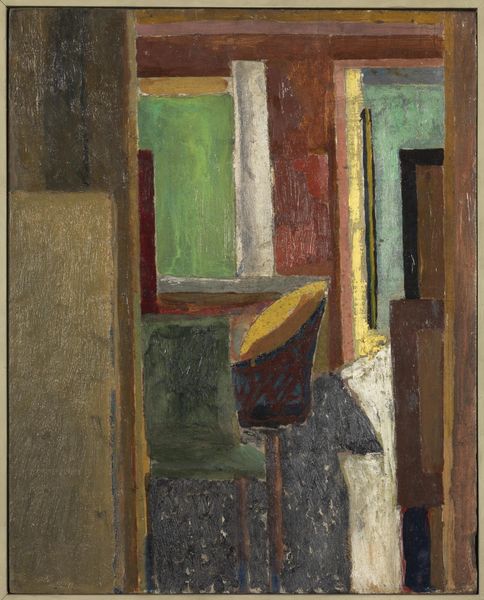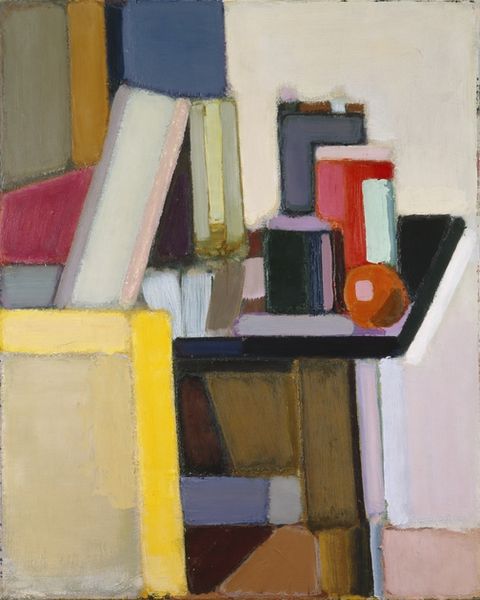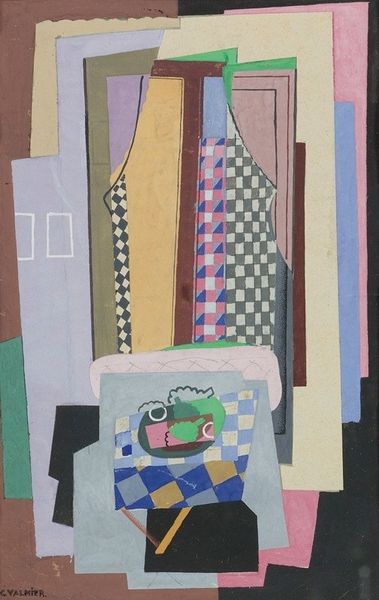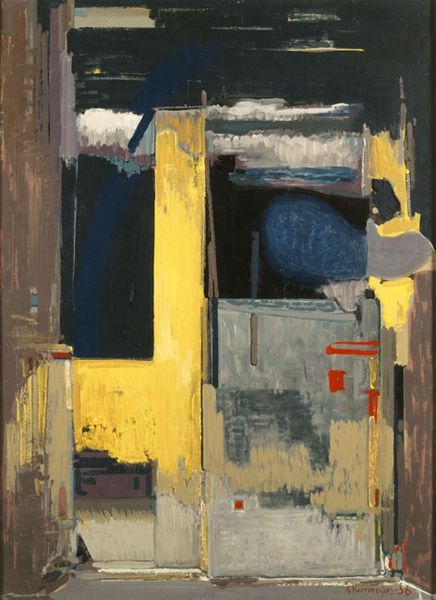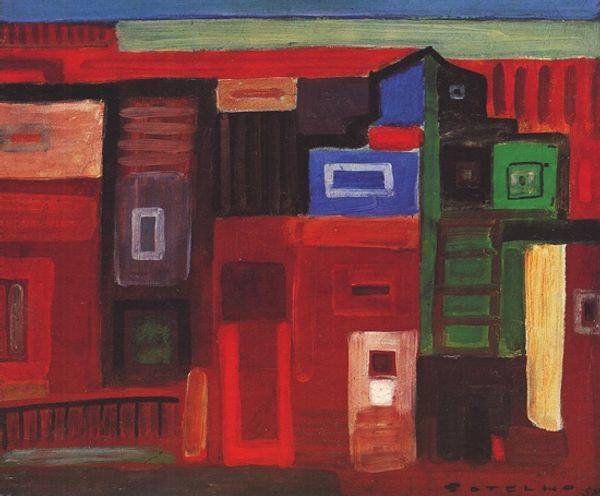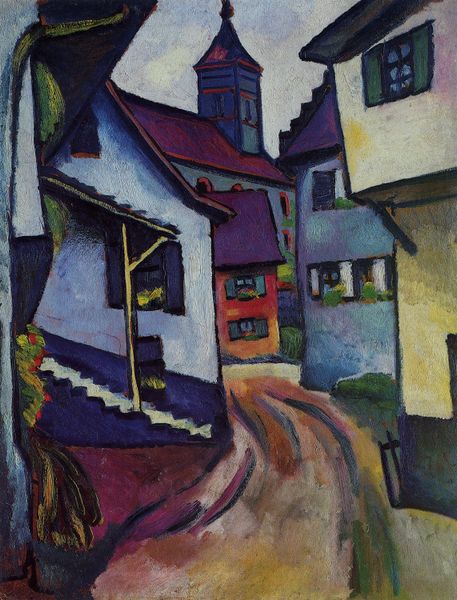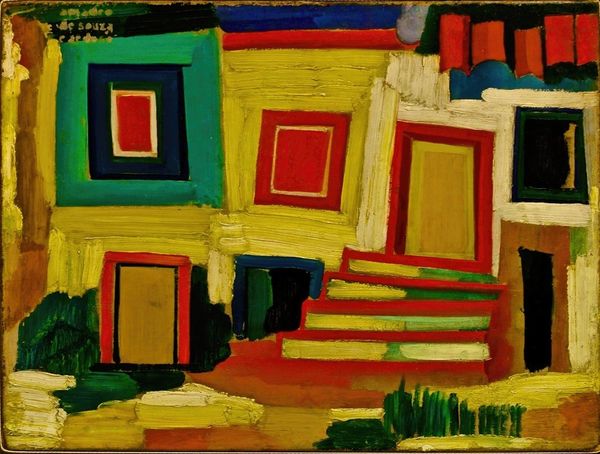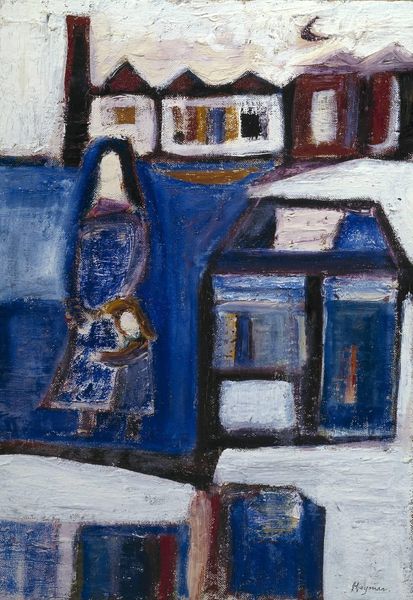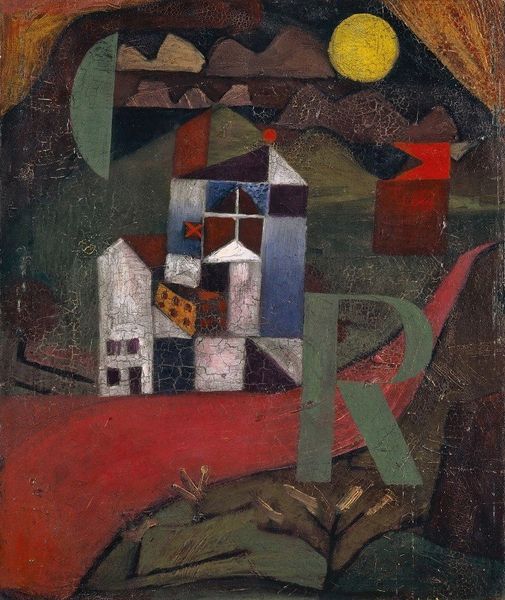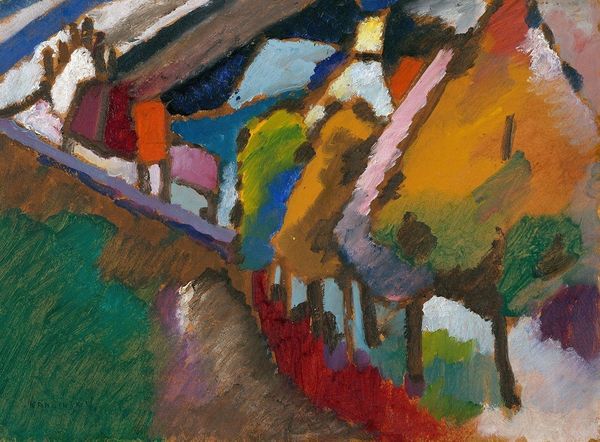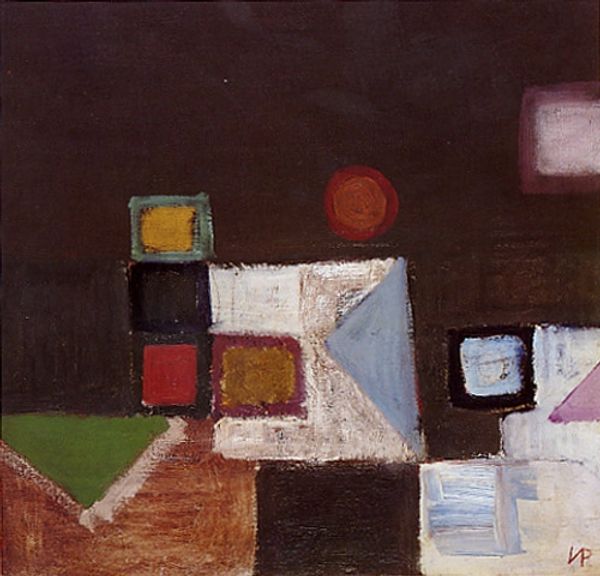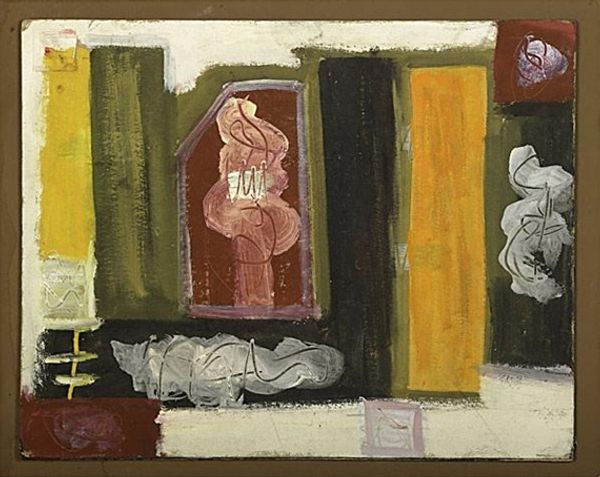
painting, oil-paint
#
cubism
#
painting
#
oil-paint
#
landscape
#
oil painting
#
cityscape
Copyright: Public domain
Curator: Looking at Amadeo de Souza-Cardoso's "Windows of a Fisherman," painted in 1915, I'm immediately struck by its almost childlike simplicity. What’s your initial impression? Editor: It feels intentionally disjointed, doesn’t it? The planes of color bump against each other, those geometric shapes outlining what seems to be buildings. It's a cubist cityscape deconstructed to its barest elements. It makes me think about how even the simplest dwellings are built with complex social relations in mind. Curator: Precisely! He's playing with perspective, and the very idea of "windows" is quite interesting here, given the year it was created. What kind of worldview did fishermen living by the coast hold in 1915? Were those windows literal, offering shelter, or something much more abstract, something representing our own internal view of reality? It also evokes the sense of looking out or even peering in. It’s unsettling in a delightful way. Editor: True, those divided windowpanes within Souza-Cardoso’s visual language act as both a filter and a frame. There’s something intrinsically private about windows. But beyond individual privacy, in 1915, Portugal, despite its official neutrality, felt the looming shadow of World War I very closely. Those rigid panes become reflective, both visually and psychologically; you start considering what someone looking out from such a place might feel, what political or personal upheavals the windows have been a silent witness to. It evokes isolation. Curator: Absolutely! And you know, the palette – those muted pinks and blues contrasted with deep greens and stark whites– creates such a distinctive mood. I see these planes as pieces of the individual identity pieced together, but slightly misaligned! Almost as if they could tell their stories if put back together seamlessly. A fractured, yet still beautiful, view of a hard way of life? Editor: That fragmentation you’re talking about becomes incredibly important because it reveals a deeply flawed society. He’s asking us to challenge traditional perceptions not just through stylistic choices like Cubism, but also through implying the fragmented and complex social narratives underlying these architectural representations of private life. The fishing industry isn't monolithic. Curator: Agreed, that makes the painting much more resonant than just an appealing geometric composition. Editor: Right. It turns those windows into poignant metaphors, challenging the narratives embedded within social systems, ones that persist even today. Curator: Well said, a little painting that asks big questions. Editor: Always, always digging deeper.
Comments
No comments
Be the first to comment and join the conversation on the ultimate creative platform.
